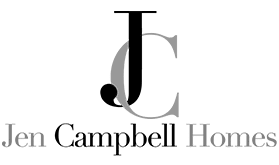How to Match the Home You Buy To Your Pocketbook?

So, you have decided to take the big leap and purchase your first home. Most of us have a “dream home” tucked away at the back of our minds — complete with six bedrooms, two fireplaces and a panoramic view. Before setting off to view properties you likely have a payment, which you are not willing to make, step back and take a reality check.
Your “dream home” can easily become a nightmare when most of your money goes to pay the mortgage and there is little left over for anything else. Overextending yourself financially is the quickest way to destroy the excitement of home ownership and add stress to your life.
Smart home-buying means knowing what you can afford and being practical about it. Most first-time buyers lack the funds needed to buy a home without assistance from a bank or financial institution. Buying a home means combining savings with money borrowed through a special arrangement called a mortgage.
To keep mortgage payments within their means, most first-time buyers purchase what is commonly known as a “starter home.” A starter home is just that — a way of getting started in long-term real estate investment.
To match the home, you buy to your pocketbook you have to realistically assess your needs, determine what you can afford and, usually, lower your expectations. Begin by enlisting the services of a real estate representative. This individual will help you target your home ownership dreams and provide valuable information on mortgage options, interest rates and incentives, such as government programs, for first-time buyers.
Your 1st step is to contact a Mortgage Lender. A good Loan Officer whether it be at your bank or a private mortgage company, they are going to take the time to explain the process and answer any and every question you may have. After your conversation with them and a possible preapproval, you will have the purchase price maximum you should be searching for.
In the meantime, here are some ways to determine how much you can afford.
Set a maximum price range
To determine your “affordability” price range, you must calculate two amounts: the amount of cash you can afford to put towards the purchase (down payment) and the maximum amount of loan (mortgage) you can comfortably carry. Typically, household expenses should not exceed 35 per cent of your gross income.
Put down as much as you can
The key to getting started for most first-time buyers is the initial down payment. This is the part of the purchase price you must put down as cash. You may be able to buy a home for as little as five percent down. But remember that the larger the down payment, the easier it will be to manage the other expenses (mortgage, utilities, and property taxes).
Know how much to borrow
To establish your maximum mortgage limit, a financial institution will determine the monthly payment you can afford by calculating your debt-service ratio. List all your loans (car, personal loans, monthly credit card balances). The sum of these and your mortgage payment, including principal, interest, and taxes, should not exceed about 40 per cent of your gross income. The mortgage payment and taxes should not exceed about 30 per cent of your gross income.
Understand interest rates
The size of the mortgage you can arrange, based on payments you can afford, depends on interest rates. The lower the rates, the larger the possible mortgage and the more affordable home-buying will be.
However, there are other variables to consider: How open is the mortgage? Is it portable? Would prepayment be allowed? Discuss your mortgage options with your REALTOR®, banker or financial advisor. Decide what is best for you, establish a limit and stick to it.
Look at other sources of funds
If you have been contributing regularly to a Registered Retirement Savings Plan (RRSP), you may have to look no further for your down payment. The federal government’s RRSP Home Buyers’ Plan allows eligible taxpayers to withdraw up to $20,000 per person ($40,000 per couple) tax free from their plan to buy a qualifying home. However, you must pay back every year at least 1/15th of the amount taken out until it is all paid back, or there will be a tax penalty.
Other sources of funds you can tap into for a down payment include savings and investments and loans or gifts from your family or relatives. If you are already a homeowner and moving up, you can use money that you get from the sale of your present home.



